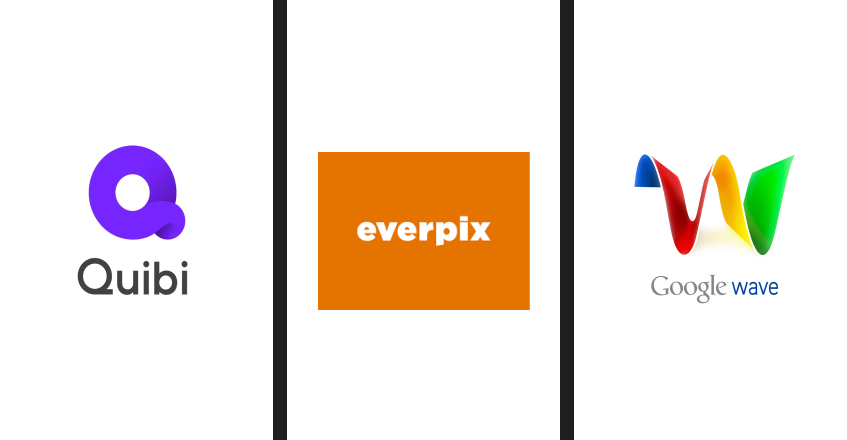The Hidden Reasons SaaS Startups Fail (It's Not the Product)
Technology
5 min read . 4th July , 2025
There’s a persistent myth in the startup world that continues to mislead early stage founders: if your product is beautifully coded, flawlessly designed, and highly scalable - success is inevitable. But the hard truth is that great tech rarely guarantees traction, and in many cases, it actively masks deeper strategic flaws. You might have spent 9 months building it “right”- clean code, scalable architecture, flawless UI*. But none of it matters if no one actually needs what you’ve built. Some of the most technically impressive startups have failed not because the tech was bad, but because their core assumptions were never tested. Great engineering is valuable, but it’s only one part of the equation -and often, not the part that makes or breaks the business.
Clean code can be a trap. Because in early-stage startups, flawless execution can mask fatal assumptions.
This blog explores why some of the most technically impressive startups still fail and what they have in common.
Great Tech Doesn’t Guarantee Success
Early-stage founders get caught in the allure of technical perfection - obsessing over scalable infrastructure, elegant architecture, and clean, modular code. It’s an understandable impulse, especially for product-driven teams. But without grounding that work in real-world validation, it's dangerously deceptive. Months, sometimes years can be lost polishing features, preparing
for edge cases, and architecting for future scale, all while the market moves on, competitors pivot faster, and user behaviour evolves in new directions.
This obsession with "building it right" often masks a more critical question: are we building the right thing?

Why These Startups Still Failed
These are the few examples of startups that had the tech, but not the traction:
1. Quibi (The Beautiful App Nobody Used)
Quibi, the short-form mobile video streaming platform, launched in 2020 with over $1.75 billion in funding, a polished product, and a star-studded content library. The tech worked well and the app had seamless orientation switching and slick UI/UX. But it made flawed assumptions about user behaviour:
• It assumed users wanted high-budget, short-form video for mobile use - they didn’t.
• It launched without social sharing, a major discovery channel for video content.
• There was little to no user validation around content preferences or consumption context.
Result: Despite beautiful execution, Quibi shut down in under 7 months due to lack of engagement and product-market fit.
2. Everpix (The Fast-Growing Product That Monetized Too Late)
Everpix was a beautifully built photo-storage and organization platform that solved a real user pain point with excellent tech, automatic photo sorting and cloud syncing. It had enthusiastic users and strong growth, but no monetization model early on:
• They focused heavily on refining features and ignored pricing strategy. • By the time they introduced paid plans, giants like Google Photos and Apple Photos had caught up with free offerings.
• They burned through their runway without proving revenue.
Result: Everpix shut down in 2013, despite a loyal user base and an elegant product.
3. Google Wave (The Impressive Tool That Asked Too Much of Users)
Google Wave was an innovative, real-time collaborative communication tool launched in 2009. It combined email, instant messaging, wikis, and social networking into one platform -powered by advanced real-time tech. But:
• It introduced an entirely new paradigm of communication. • It required users to completely change how they collaborated and communicated.
• The learning curve was steep, and the benefits unclear to average users.
Result: Despite being technically advanced, Google Wave was discontinued within 18 months because users simply didn’t adopt it.
In each case, the failure didn’t come from a lack of talent or engineering prowess. It came from:
• No clear distribution strategy
• Weak or misaligned problem-solution fit
• Founder tunnel vision and late feedback
• Lack of early validation loops
What all these startups had in common wasn’t poor engineering- it was poor sequencing. They built first and asked questions later. But systems like studios flip this script.

Tech Is an Enabler -Not the Foundation
It’s easy to believe tech is the foundation of a startup. But in truth, tech is only an enabler - a tool to deliver a solution to a validated need.
Founders often focus on hiring engineers before they’ve nailed their insight. Early-stage founders don’t just need engineers; they need clarity. Clarity on the problem they’re solving, on who they’re solving it for, and on how they’ll bring that solution to market. Iteration and learning should be prioritized over perfection. The goal in the first six months shouldn’t be clean code - it should be finding a signal that people care.
What Founders Should Do Differently
Here’s what separates resilient startups from forgotten ones:
• Validate before building -Talk to users, test assumptions, and kill ideas fast.
• Prioritize usefulness over complexity - Flashy features mean nothing if they don’t solve a core problem.
• Shorten feedback loops -Get real-world reactions quickly and often.
• Don’t chase perfection on Day one - Build lean, test fast, and evolve with users.
• Adopt a cross-functional mindset - Even as a solo founder, think like a PM, marketer, and operator, not just a coder.
The Venture Studio Solution
Venture studios take a different approach to building startups. Instead of chasing perfect code or feature completeness, studios chase evidence, validation, and momentum. In a studio, ideas are pressure-tested early- before a single line of code is written through rigorous user insight, rapid prototyping, and real-world feedback. Startups born in studios don’t just ship faster - they learn faster. That’s what drives traction.
The studio model de-risks early execution by combining product, design, marketing, and operations into one cross-functional launch engine - a capability most solo founders lack.
Conclusion
In the race to build the next big thing, it’s easy to assume that flawless technology is the finish line. But the reality is, code can’t compensate for a weak insight, a misjudged market, or a missing strategy. What separates successful startups from the rest isn’t how elegant their backend is -it’s how well they understand their users, validate their assumptions, and adapt with speed.
Venture studios offer a smarter path. By front-loading validation, integrating cross-functional expertise, and focusing on real-world traction from day one, studios help founders avoid the common traps of tech-first thinking. They shift the focus from perfection to progress from building for the sake of it, to building what actually matters.
At YE Stack, we help founders avoid expensive tech-first mistakes by focusing on what really drives traction. Want to see how we approach early-stage execution? We are here to support your startup journey. Let’s build something together!
Abbreviations
UI: User Interface


Bootstrapped, But Not Alone: How the Venture Studio Model can Ignite your Growth
